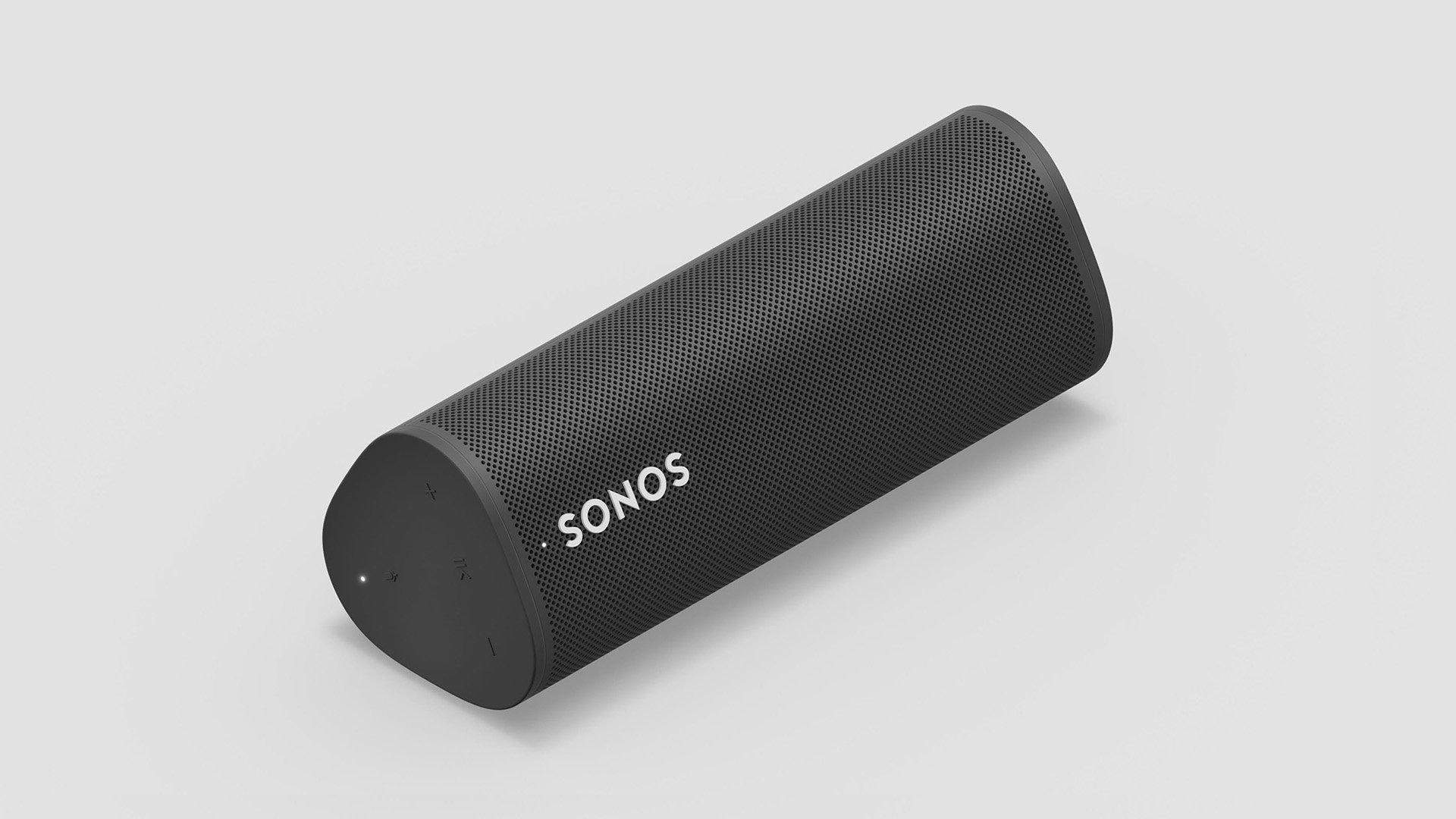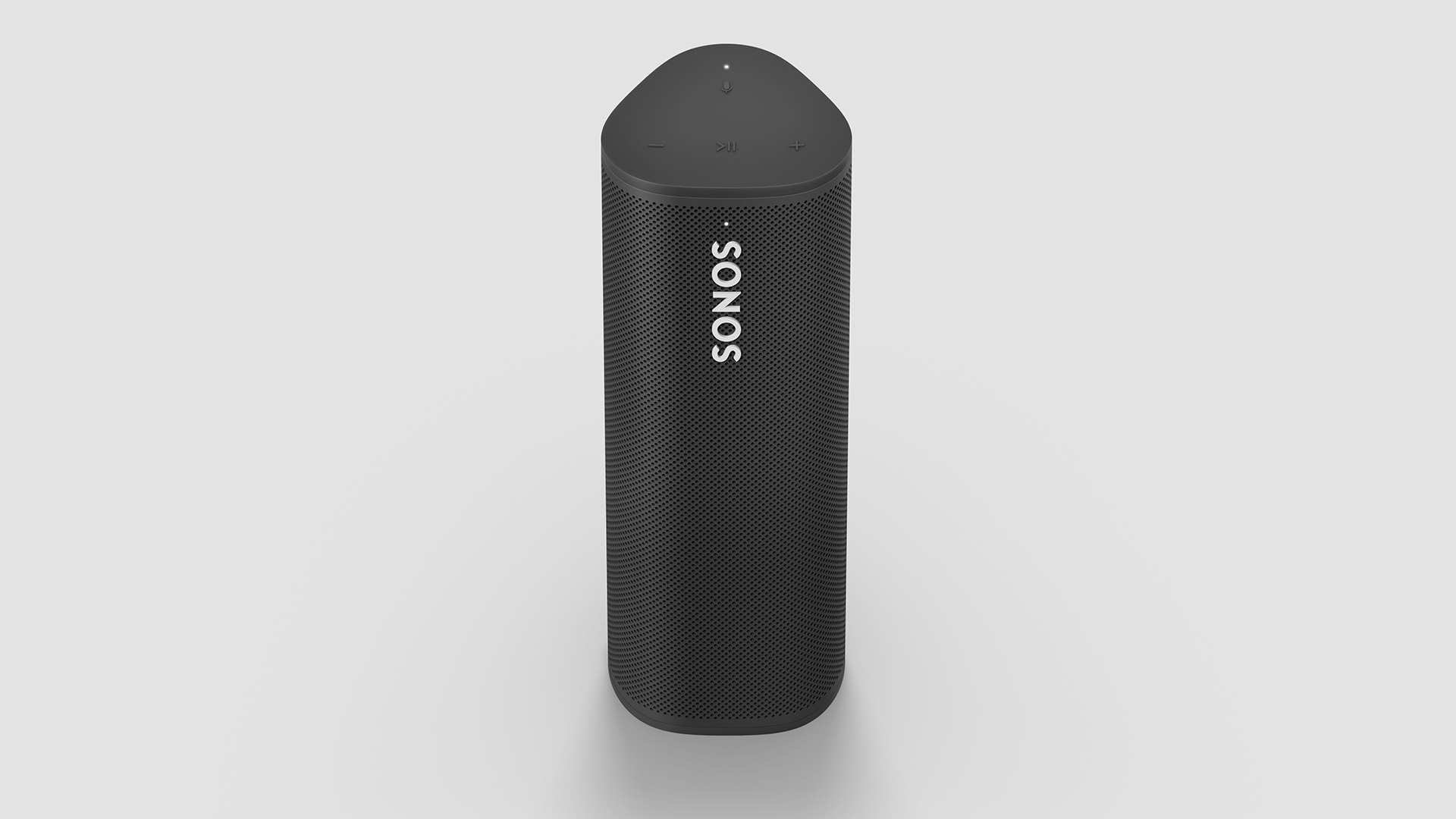What Hi-Fi? Verdict
We’ve waited a while for Sonos’s entry to the portable outdoor speaker market, and the result is sure to please many
Pros
- +
Full-bodied sound
- +
Lots of features
- +
Portable
Cons
- -
Clarity not exceptional
- -
Average timing and dynamics
Why you can trust What Hi-Fi?
It’s fair to say Roam wasn’t built in a day. While Sonos doing things in its own time hasn’t dented the multi-room expert’s reputation, it is still perhaps a little surprising that it took until 2021 for the brand to reveal its first truly portable outdoor speaker.
The Sonos Roam is an off-roading, deep-diving speaker with dimensions and a feature set to rival those from JBL and Ultimate Ears. Given Sonos’s run of superb-sounding products, one we can drop in our backpack and take on a ramble has been highly anticipated – especially since the Move, the company’s first battery-powered speaker, was more portly than portable in comparison.
Price
Released in April 2021, the Sonos Roam arrived as the most affordable Sonos speaker (if you discount those it designed in partnership with IKEA a few years ago) – and it still is. Well, the Roam SL is technically, but that is simply a microphone- and voice control-less version.
The Roam still isn’t what you’d describe as a budget speaker, tipping the scales at £159 / $169 / AU$279, but any of its rivals costing less than three figures will struggle to match the Roam’s feature set.
This isn’t just a Sonos-tuned and branded portable unit; it is fully immersed in the Sonos multi-room ecosystem, which is easily the best around. That means you can use it in the garden and have your music playing in the house over wi-fi for when you need to shelter from the rain, or grab it and take the commentary with you to get another beer while the footy is on via Bluetooth.
Build

As its name suggests, the Roam wasn’t built for the home or even your garden. The Move covers those bases, but this speaker is about straying further from your living room. At just 17cm tall, it’s small and weighty (430g) enough to feel robust without weighing you down while on the move.

Bluetooth Yes
AirPlay 2 Yes
Wi-fi Yes
Finishes x2
Dimensions (hwd) 16.8 x 6.2 x 6cm
Weight 430g
The Roam doesn’t just feel tough; it is IP67 rated, meaning complete water and dust resistance – it can be immersed in one meter of water for up to 30 minutes – and its built-in battery has the stamina for up to 10 hours of playback from a single charge.
The latest hi-fi, home cinema and tech news, reviews, buying advice and deals, direct to your inbox.
On that note, the Roam comes with a USB-C charging cable – though not a power adaptor – and is compatible with standard Qi wireless chargers. Sonos is also launching its own charging base, to which the speaker snaps magnetically.
That USB port is the only physical connection, so there seems little danger of being harmed during a fairly rough and ready life. There are controls for play/pause, volume and microphone function on one of the Roam’s rubbered ends, but otherwise everything is controlled via the Sonos app.
Features

For anyone who hasn’t used the Sonos app before: it’s simply the best out there. It’s simple to use, and as well as being vital for set-up is where you can control a number of features, such as compatible voice assistants and Trueplay tuning.
The latter, with help from the built-in mic, tweaks the EQ automatically depending on the speaker’s surroundings, though you can also fine-tune bass and treble yourself.
Given its nomadic ambitions, the Roam cannot rely on wi-fi alone for its music streaming, so Bluetooth and AirPlay 2 are also on board. Connecting via Bluetooth is as simple as holding down the Roam’s power button and waiting for the Sonos to pop up in your available devices.
The driver tech inside is pleasingly simple, in that Sonos has opted for just a single tweeter and, behind its insignia, a large ovular mid/bass woofer. These are powered by separate Class H digital amplifiers, but there’s no attempt at any audio tricks that could see the Roam fall flat on its face; this is straightforward mono designed to have an impact in any scenario.
Sound

Impact is something it definitely isn’t lacking, not in terms of confidence nor its bold presentation. Even from a standing start, the Roam eats up a bass-heavy drill beat. As with any Sonos product, you can tweak the EQ of the Roam, but this is naturally quite a bass and mid-heavy presentation. Treble frequencies aren’t overly rolled off, but we’re definitely on the easier side of listening.
That’s not necessarily a bad thing when you consider how the Roam might be used. There’s nothing worse than coarse hi-hats cutting through the chatter at a party when the speaker is turned up too loud. A clear high-end would be even better, but sometimes we can understand playing things a bit safe.
That bass weight is kept well in check, too, ensuring some presence and punch without muddying up the mix. Sonos is well aware that the low end is desirable but the mids are the star of the show. So it transpires with the Roam. Deeper voices in particular can be lusciously full and are placed well enough forward in the mix for this kind of outdoor and party speaker.
However, this is a four-star review, so what has gone wrong for the Roam? Not much at all in isolation. For many people, this will be the ideal speaker, fit for purpose. But we feel Sonos could have stretched itself a little more in certain aspects of its audio performance.
Detail and clarity are two such areas. This speaker doesn’t particularly sound boxed in, but pit it against some of the best portable speakers, which might have fewer features but offset that with a lighter price tag, and the difference is a little disappointing.
Clarity is an area in which Sonos often excels, but we’re talking about a noticeable step behind its rivals here. Superior high-end articulation is one thing, but comparisons reveal textures and timbres can be greatly more insightful throughout the frequency range.
A listen to other portable Bluetooth speakers around this price also confirms that we could be expecting more in terms of timing and dynamics. There is plenty of punch to the Roam’s performance, but it is far less expressive than the competition here, and can also seem quite sluggish.
Verdict
Will that matter to most people? Depending on when and where you encounter the Sonos Roam, it probably won’t. It just means there is better all-round sound out there – and there has been for some while.
For a Sonos user, though, this is a welcome addition to the family. It’s a box many customers have wanted to be ticked for a while, and the Roam doesn’t generally disappoint. It could be better, but we still like it a lot.
SCORES
- Sound 4
- Features 5
- Build 5
MORE:
Check out these Sonos Roam tips, tricks and features
Read our guide to the best Bluetooth speakers
Read our JBL Flip 6 review
Read our Sonos Move review
Sonos multi-room system review: as strong as ever
What Hi-Fi?, founded in 1976, is the world's leading independent guide to buying and owning hi-fi and home entertainment products. Our comprehensive tests help you buy the very best for your money, with our advice sections giving you step-by-step information on how to get even more from your music and movies. Everything is tested by our dedicated team of in-house reviewers in our custom-built test rooms in London, Reading and Bath. Our coveted five-star rating and Awards are recognised all over the world as the ultimate seal of approval, so you can buy with absolute confidence.

